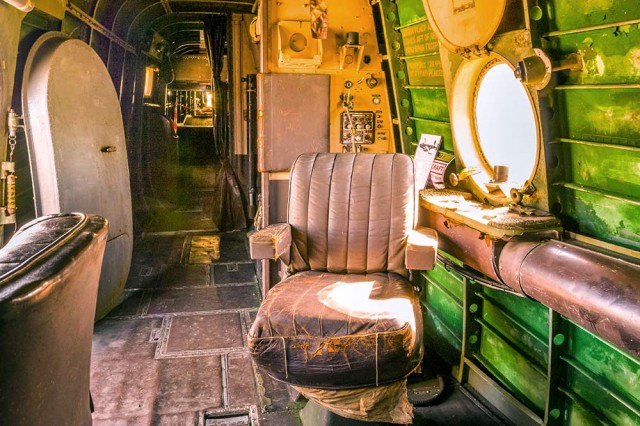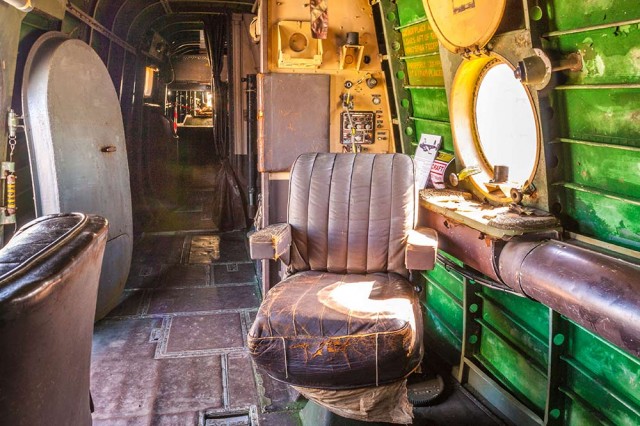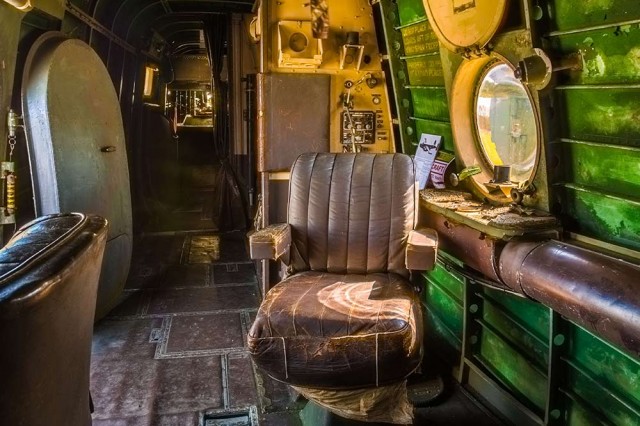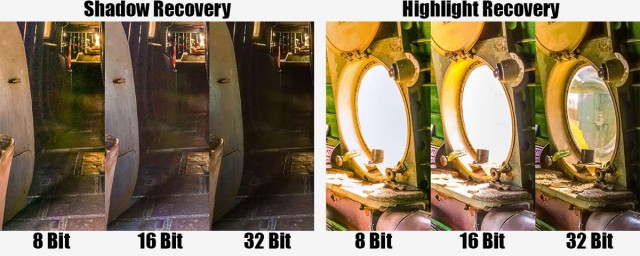8 bit, 16 bit or 32 bit?
When it comes to the technology that surrounds digital photography I’m really not interested in how things work. All I want to know what things work and which is best for me. So if you’re looking for an article about how 8 bit is technically different to 16 bit then this isn’t it. However it you want to know how much better looking 16 bit images can be compared to 8 bit then read on.
 Why does bit depth matter?
Why does bit depth matter?
In a nutshell the bigger the bit depth the more data is in the image and the more adjustment you can make to that images shadows and highlights. Not only that, the adjustments will be less damaging to the image too.
In order to see how bit depth affects the image I’ve taken this test photo which I have in both 8, 16 and 32 bit and pushed them to the max in Adobe Camera RAW. That means I’ve pulled out all the highlight and shadow detail that I can, way beyond what would be considered acceptable. Click the small image to see the unprocessed original.
8 Bit
Do you shoot jpg images? Are your images destined only for the internet? Is the size of the file important to you? If the answer to any of the questions is yes 8 bit images are for you.  8 bit has enough information to show colour images with smooth tones and even has a little bit of wiggle room to tweak exposure a little bit. It’s possible to pull detail out of a photos shadows but the results become noisy very quickly. Highlight recover is much less effective and as a result many people who shoot JPG choose to slightly under expose or darken the image.
8 bit has enough information to show colour images with smooth tones and even has a little bit of wiggle room to tweak exposure a little bit. It’s possible to pull detail out of a photos shadows but the results become noisy very quickly. Highlight recover is much less effective and as a result many people who shoot JPG choose to slightly under expose or darken the image.
8 bit images are great if the image you shoot needs little or no exposure adjustment in post processing.
16 Bit
Although technically not a true 16 bit image I’m basically talking about the RAW files from your digital camera. 16 bit files are packed with a lot more information then your standard 8 bit JPG and that means a lot more space to make adjustments to the exposure.
Shadow areas of an image can be made slightly lighter without adding noise to the image but heavy adjustment (as seen in the sample image) will still look terrible. As with the 8 bit image recovering highlight detail is less effective then shadow but once again the extra data can yield more detail.
Saving your 16 bit images as JPG’s isn’t possible, so TIFF or PSD are your top options to save as. It’s also worth noting that not all of Photoshop is compatible with 16 bit images, for example some of the older filters will be greyed out.
32 Bit
The new kid on the block is 32 bit. To date no consumer cameras can capture 32 bit images, at least not in one click. However by blending 3 or more differing exposure inside of Photoshop you can create a 32 bit image that contains a vast amount of image data.
 Adobe Camera RAW in Photoshop CS6 and Lightroom 4 (or newer) can open and edit 32 bit files. Best of all you can choose to have the highlight detail from the dark exposure and shadow detail from the light exposure. Now if that sounds a little bit like HDR (HighDynamicRange) you’re not wrong.
Adobe Camera RAW in Photoshop CS6 and Lightroom 4 (or newer) can open and edit 32 bit files. Best of all you can choose to have the highlight detail from the dark exposure and shadow detail from the light exposure. Now if that sounds a little bit like HDR (HighDynamicRange) you’re not wrong.
Because 32 bit is so new don’t expect much to work with it. Photoshop can open the files but almost everything will be greyed out. It’s also worth noting that your 32 bit TIFF files will be enormous, they can easily be 10 times bigger in memory size then RAW files but they’re worth it!












Interesting article Gavin. I agree we get bogged down on how somethings work rather than accept it and concentrate on what works for us.
Have great Christmas, looking forward to details of courses for 2014.
Macgeth
Interesting as usual !
Thanks for your job Gavin 🙂
JP (from Belgium)
Hi Gavin, I have experimented with 32 bit, funny enough at the same location as your examples! Agreed the results are impressive and as stated file sizes are enormous I think I had a 500mb + file size.
Keep up the good work Happy Christmas and hope to see you at a club meet soon!
Gavin…
You gotta be pretty darn smart to even know the info in this article. Good stuff!
Thanks a million!
Merry Christmas and God Bless You and Your Family
Is this related to the specifaction “Color Depth” of a camera, which is also expressed in bits?
If so: How much difference would there be between for example 24 bits and 21 bits?
best explanation and examples i have seen on the internet…ty
Question for you….
In terms of medium format, I was thinking that it is like 12 bit for FX and medium format was 14… Or something along those lines.
Any input as to the delta there? Say a d800 vs a credo 80? As far as bits are concerned..
Any examples of a camera that shoots 32 bit?
Great article! Super helpful!!
Way to technical for my little mind Dan. I;m sure in the info is out on the net somewhere 🙂
Thanks Gavin,
One thing has left me a little confused, though….. “Shadow Recovery”….. maybe I’ve been wrong, but you show 8/16/32-bit images and it’s the 8-bit image which has more detail in the shadows than the others (though it looks a bit green). Does that mean that ‘shadow recovery’ actually increases darkness (reduces light) ….. or are the images in the wrong order?
For Dan…. as neither Hasselblad nor Phase One has more than 16-bit capture (which in itself is more than the normal Raw of 14-bit) I can’t think that there’s a camera out there that captures 32-bit images (yet). There again, imagine the file size of a 32-bit image on a 60Mp camera (like the Hasselblad H5D-60)!
They’re in the right order. Look at the enlarged image and you find the 8 bit image has a strong shadow clour shift and a huge amount of noise too… nasty!
Thanks Gavin, Yes I see the colour shift and noise…. it just seemed that the 8-bit image in the ‘Shadow Recovery’ triptych had more detail. If the colour cast and noise are a by-product of brightening the shadows of an 8-bit image then I’ll take note and avoid it. Thanks.